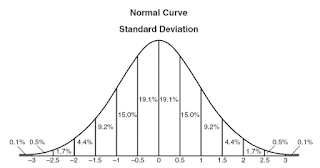On this day, 5 years ago, I was sending out the announcement for my dissertation defense. These defenses are considered public, so people are required to post them a certain number of days in advance. Usually, they are only posted in the academic department where the defense will take place, and sometimes they are publicized to the larger university.
I joked with friends about also posting the announcement on Facebook, though I didn't want random friends to feel compelled to show up. Instead decided to have a little fun with it. So I posted this:
WOSSAMOTTA U DEPARTMENT OF SILLINESS
ANNOUNCES THE FINAL PUBLIC HUMILIATION OF SARA M. HOUSATELLI
B.S. COMPARATIVE NERDINESS, FRAK UNIVERSITY
M.A. BEING AWESOME, UNIVERSITY OF SHEEN, CHARLIE
FLYING HIGH: THE EFFECT OF PAPER AIRPLANE ASSEMBLY SKILLS ON SOCIAL SKILLS
MAY 39, 2011; 10 AM; YOUR MOM’S LIVING ROOM
ALFRED G. PACKER, DCA, CANNIBALISM CHAIR
DOUGLAS ADAMS, HHG
JOE GREENS, DMU
LUCIE MANETTE, TTC
ANNOUNCES THE FINAL PUBLIC HUMILIATION OF SARA M. HOUSATELLI
B.S. COMPARATIVE NERDINESS, FRAK UNIVERSITY
M.A. BEING AWESOME, UNIVERSITY OF SHEEN, CHARLIE
FLYING HIGH: THE EFFECT OF PAPER AIRPLANE ASSEMBLY SKILLS ON SOCIAL SKILLS
MAY 39, 2011; 10 AM; YOUR MOM’S LIVING ROOM
ALFRED G. PACKER, DCA, CANNIBALISM CHAIR
DOUGLAS ADAMS, HHG
JOE GREENS, DMU
LUCIE MANETTE, TTC
In case you're wondering, this is the format in which defense announcements are written. For comparison, this is the real thing:
LOYOLA UNIVERSITY CHICAGO
DEPARTMENT OF PSYCHOLOGY
ANNOUNCES THE FINAL PUBLIC EXAMINATION OF
SARA M. LOCATELLI
B.S. PSYCHOLOGY, BAKER UNIVERSITY
M.A. SOCIAL PSYCHOLOGY, LOYOLA UNIVERSITY CHICAGO
PERSONAL BELIEFS AND PUBLIC PRINT:
THE INFLUENCE OF PRE-EXISTING ATTITUDES AND
PRETRIAL PUBLICITY INFORMATION ON FINAL VERDICTS
JUNE 8, 2011; 10:00 AM; COFFEY HALL 116
COMMITTEE CHAIR NAME, DEGREE, COMMITTEE CHAIR (Redacted to protect the innocent)
REMAINING MEMBERS, DEGREES...
DEPARTMENT OF PSYCHOLOGY
ANNOUNCES THE FINAL PUBLIC EXAMINATION OF
SARA M. LOCATELLI
B.S. PSYCHOLOGY, BAKER UNIVERSITY
M.A. SOCIAL PSYCHOLOGY, LOYOLA UNIVERSITY CHICAGO
PERSONAL BELIEFS AND PUBLIC PRINT:
THE INFLUENCE OF PRE-EXISTING ATTITUDES AND
PRETRIAL PUBLICITY INFORMATION ON FINAL VERDICTS
JUNE 8, 2011; 10:00 AM; COFFEY HALL 116
COMMITTEE CHAIR NAME, DEGREE, COMMITTEE CHAIR (Redacted to protect the innocent)
REMAINING MEMBERS, DEGREES...
Spoiler alert: I passed that dissertation defense, so on June 8 this year, it will be exactly 5 years since the first time I was called "Dr."























